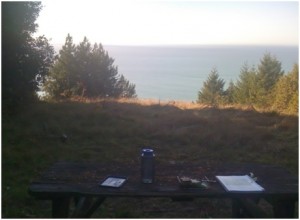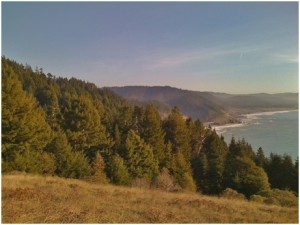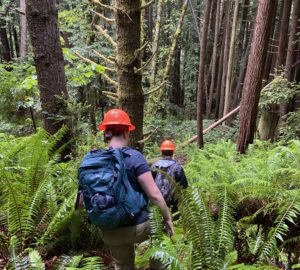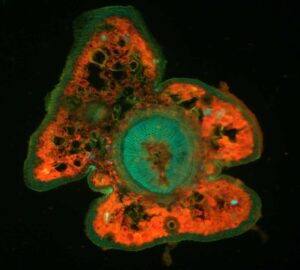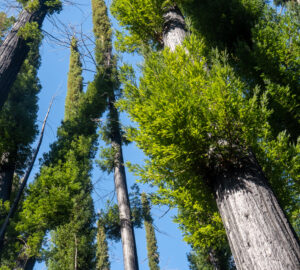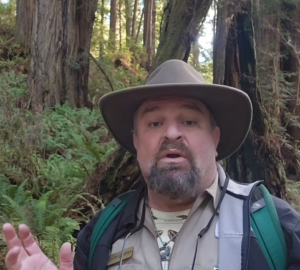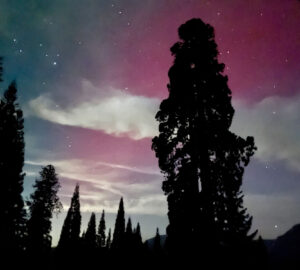The view from the picnic table was grand to be sure, the blue infinities of sea and sky meeting where the distant fog gathered offshore (and coastal fog, when you think about it, really is the perfect blend of the two). The lovely panorama was broken, though, by the tops of several small trees whose intrusion is unwelcome even more for its ecological implications than for its impact on the view (or “viewshed,” as we in conservation call it).
Meadows once covered a significant portion of the League’s Cape Vizcaino property. Created by landslides and lightning and maintained by burning and grazing, those fields provided vital habitat for a host of native plants and animals. However, in the absence of fire (both from the loss of Native American burning and decades of suppression policies) and grazing (which served to maintain the meadows even after fire was removed), the meadows are being colonized by Douglas fir trees whose light, windblown seeds easily establish on the open ground of the meadow.
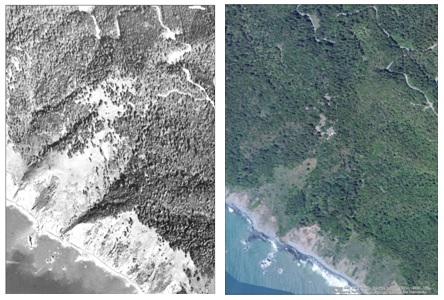
The two photos above show the same stretch of the Cape Vizcaino coast, and the difference is striking. The first, taken in 1947, shows the meadow extending inland from the coastal bluff all the way to a small collection of buildings that once housed forest workers. The second, taken last year, shows the meadow contained by a wall of forest which upon closer examination proves to be the same Douglas firs that are in the process of ruining my lunchtime view.
The ecological and cultural costs of losing the meadow are high, and we plan to do something about it. Fire once created and maintained the meadows, so fire will be used again to restore them.
After carefully surveying the site to establish the current and historical boundaries of the meadows, we will build protective fire breaks around the area to be burned, and then light it piece by piece, controlling the size, speed and temperature of the flames in order to remove the encroaching Douglas firs and restart the process of succession without risking a major fire that might do serious damage to the forest that surrounds it.
Once burned, the meadow will quickly regenerate and provide habitat for the grasses and forbs of the coastal prairie as well as the animals that use them for food and shelter. One fire will not be enough, and in future years more burns will need to be conducted, less for ecosystem restoration than ecosystem maintenance. This active care will ensure that even in the absence of large-scale natural fires, the meadows of Cape Vizcaino will remain.
Below is the view from the lunch spot, followed by a view south across the meadow. Learn more about the many ways we help forests and land recover and how you can help!
